ASM Metals HandBook Vol. 14 - Forming and Forging
Подождите немного. Документ загружается.

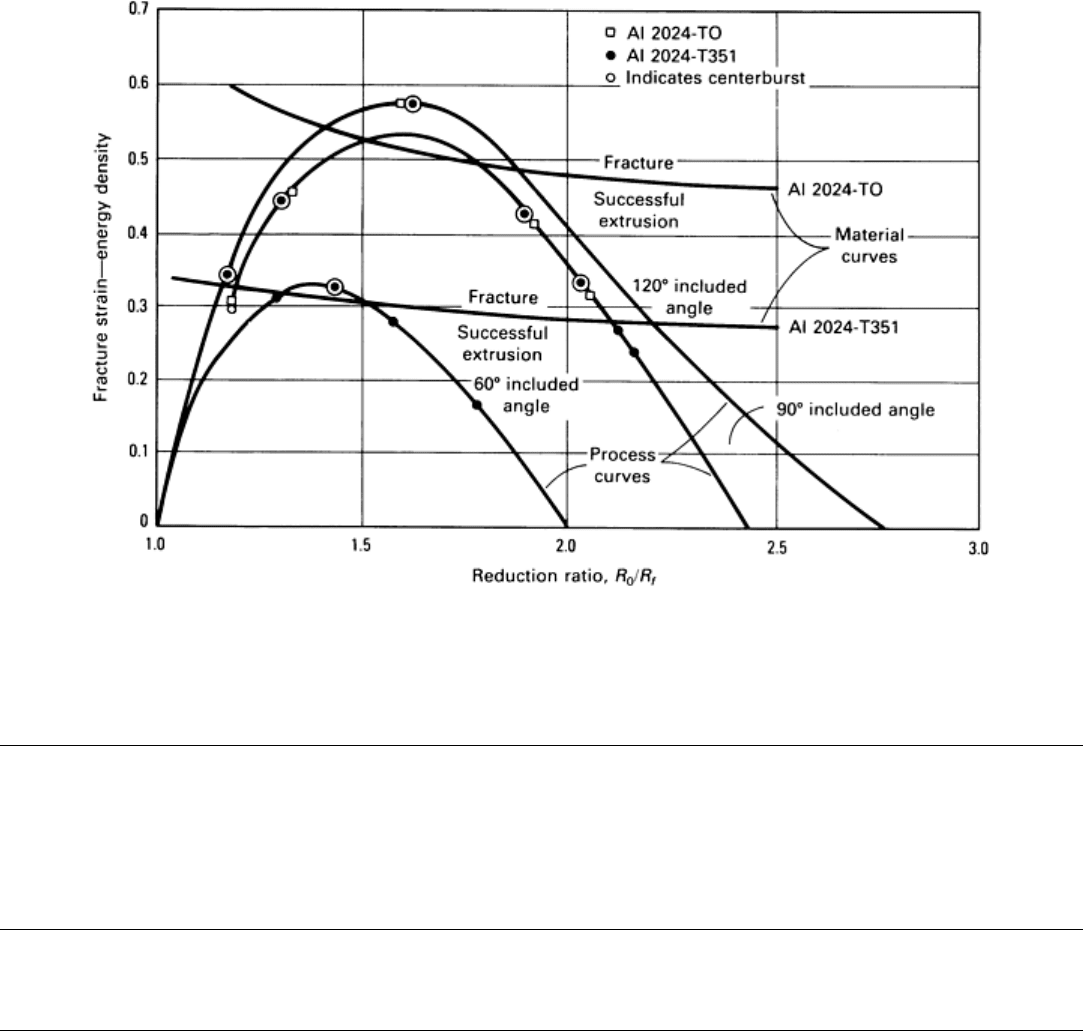
Fig. 16 Workability criteria for centerbursting in aluminum alloy 2024. Based on a maximum tensile stress-
strain energy criterion. Source: Ref 11.
References cited in this section
10.
M.G. Cockcroft and K.J. Latham, Ductility and the Workability of Metals, J. Inst. Met., Vol 96, 1968, p 33-
39
11.
A.L. Hoffmanner, Technical Report AFML-TR-69-174, U.S. Air Force Materials Laboratory, June 1969
Introduction to Workability
George E. Dieter, University of Maryland
Dynamic Material Modeling
A processing map, such as that shown in Fig. 6, is a very useful guide for the selection of deformation processing
conditions. However, processing maps that are constructed from mechanistic models of fracture modes are limited in
practical application as a design tool. The analyses are valid only for pure metals and simple alloys, not for complicated
engineering materials in which strain-rate sensitivity is a function of temperature and strain rate. Moreover, the numerous
material parameters, such as diffusivity, that must be introduced into the models, are difficult to obtain for complicated
engineering alloys. Perhaps most important, the location of the boundaries in the processing map is very sensitive to
microstructure and to prior thermomechanical history. It is difficult to account for these factors in the mechanistic models.
A top-down approach has been developed that begins with macroscopic determination of flow stress as a function of
temperature, strain rate, and strain and ends with a microscopic evaluation of the microstructure and the final properties of
the forging (Ref 12). The technique, called dynamic material modeling (DMM), maps the power efficiency of the
deformation of the material in a strain rate/temperature space (Fig. 17). At a hot-working temperature, the power per unit
volume P absorbed by the workpiece during plastic flow is:
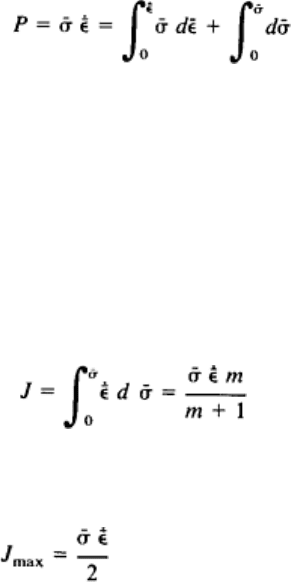
(Eq 18)
or
P = G + J
(Eq 19)
where G is the power dissipated by plastic work (most of it converted into heat), and J is the dissipator power co-content,
which is related to the metallurgical mechanisms that occur dynamically to dissipate power. A strong theoretical basis for
this position has been developed from continuum mechanics and irreversible thermodynamics (Ref 13). Figure 18
illustrates the definitions of G and J. At a given deformation temperature and strain:
(Eq 20)
where m is the strain rate sensitivity of the material. The value of J reaches its maximum when m = 1:
(Eq 21)
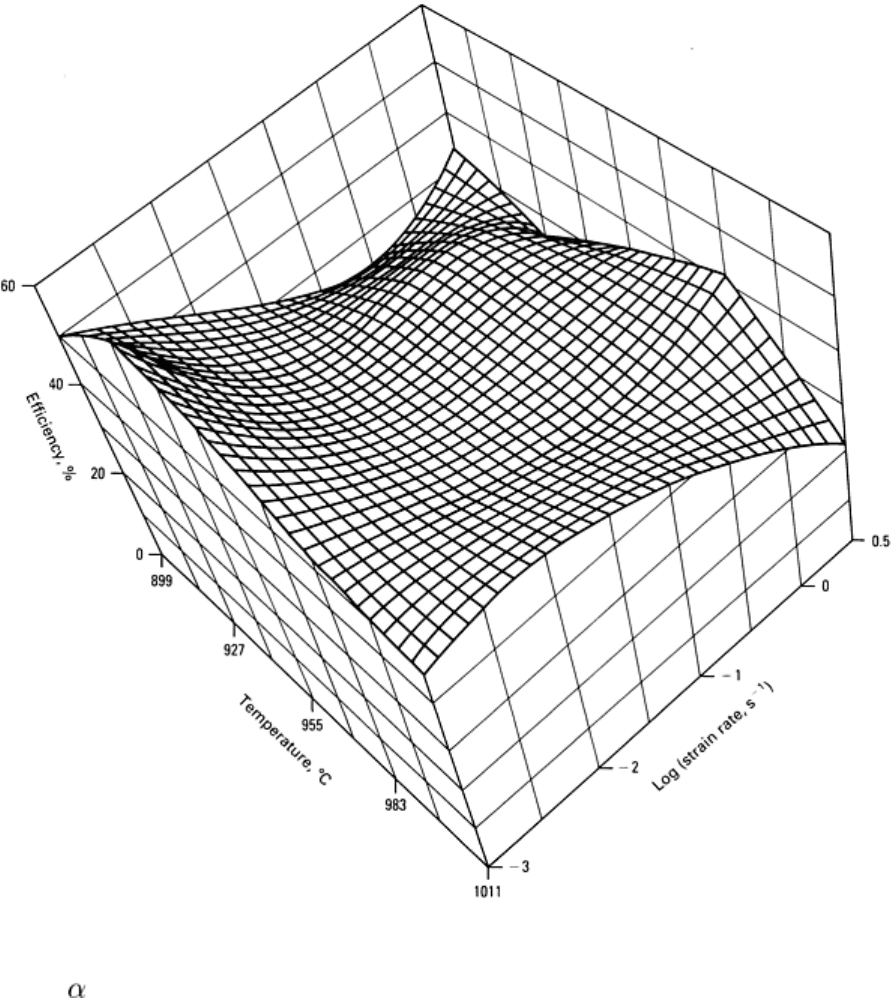
Fig. 17 Three-
dimensional plot showing variation of efficiency of power dissipation with temperature and strain
rate for Ti-6242 + β preform at 0.6 strain. Source: Ref 13.
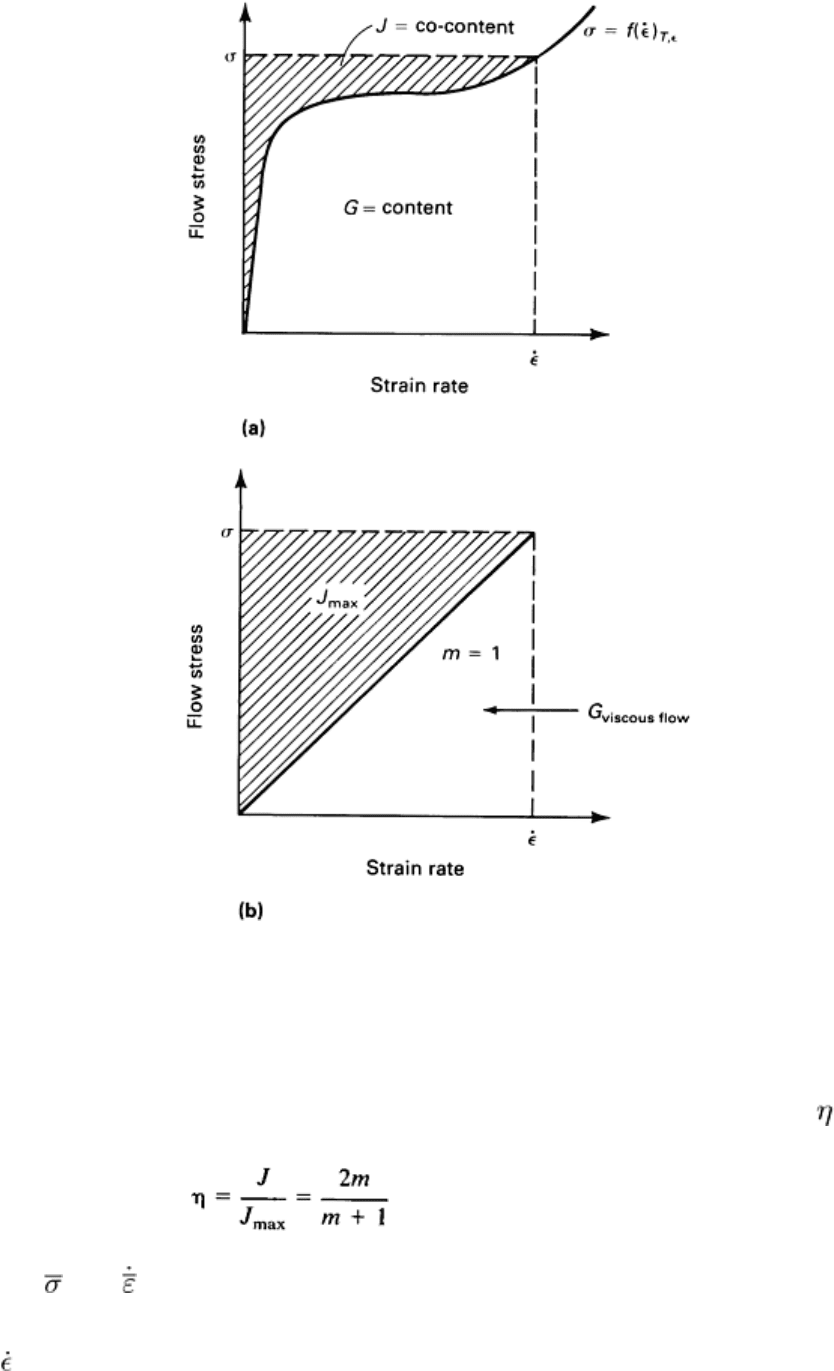
Fig. 18
Schematic of constitutive relation of material system as energy converter (dissipator). (a) Material
system as nonlinear (general case) energy dissipater. (b) Material system as linear (special
case) dissipator.
Source: Ref 13.
A convenient measure of the power dissipation capacity of the materials is the efficiency of dissipation, :
(Eq 22)
where m = (d ln )/(d ln ).
By measuring flow stress as a function of strain, strain rate, and temperature and by calculating strain rate sensitivity at
each T and (Ref 14, 15) it is possible to determine η from Eq 22. By applying stability theory (Ref 13), it is then possible
to establish the loci of bifurcation points as boundaries between safe and unsafe regions on a processing map (Fig. 19).
The boundaries, which are determined by Liapunov stability analysis, correspond to a narrow region in which the energy
dispersal processes of the material are in a steady state. Processing conditions should be designed to operate in the regions
identified as stable. The DMM methodology describes the dynamic path a material element takes in response to an
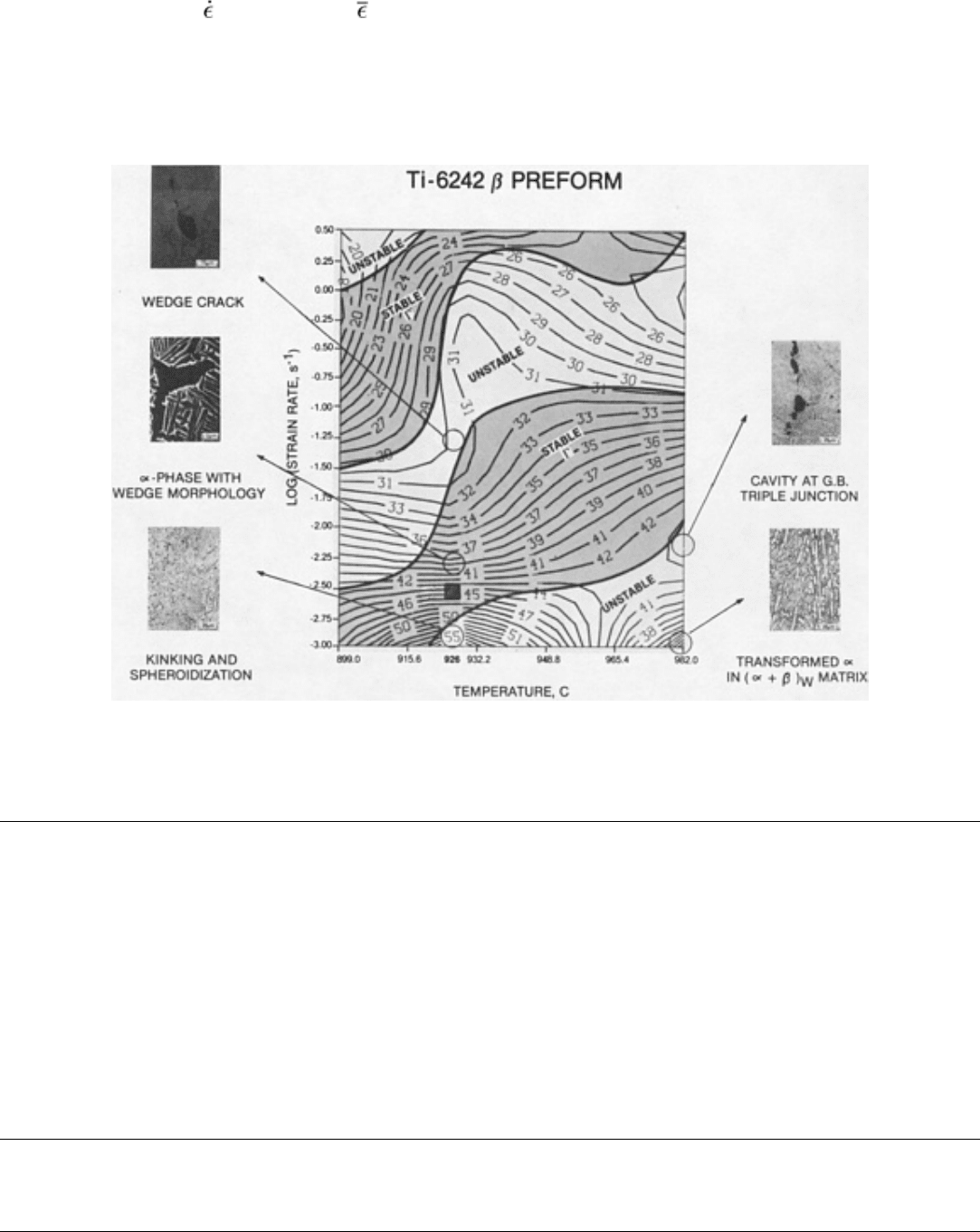
instantaneous change in at a given T and . As such, it is a map that graphically describes power dissipation by the
material in stable and unstable ways. These boundaries correspond to safe and unsafe regions on a processing map. The
use of the DMM methodology is in its infancy, but it appears to be a powerful tool for evaluating workability and
controlling microstructure by thermomechanical processing in complex alloy systems. More detailed information can be
found in the Section "Computer-Aided Process Design for Bulk Forming" in this Volume.
Fig. 19 Processing map for Ti-6242 β microstructure with stable regions identified. Source: Ref 13.
References cited in this section
12.
Y.V.R.K. Prasad, H.L. Gegel, S.M. Doraivelu, J.C. Malas, J.T. Morgan, K.A. La
rk, and D.R. Barker,
Modeling of Dynamic Material Behavior in Hot Deformation: Forging of Ti-6242, Metall. Trans. A,
Vol
15A, 1984, p 1883-1892
13.
H.L. Gegel, Synthesis of Atomistics and Continuum Modeling to Describe Microstructure, in
Computer
Simulation in Materials Processing,
Proceedings of Materials Science Seminar, ASM INTERNATIONAL,
1987
14.
P. Dadras and J.F. Thomas, Metall. Trans. A, Vol 12A, 1981, p 1867
15.
S.L. Semiatin, J.F. Thomas, and P. Dadras, Metall. Trans. A, Vol 14A, 1983, p 2363
.
Introduction to Workability
George E. Dieter, University of Maryland
References
1. T. Gladman, B. Holmes, and L.D. McIvor, Effect of Second-
Phase Particles on the Mechanical Properties

of Steel, Iron and Steel Institute 1971,p 78
2. T.G. Byrer, Ed., Forging Handbook, American Society for Metals, 1985
3.
H. Gegel, S. Nadiv, and R. Raj, Dynamic Effects on Flow and Fracture During Isothermal Forging of a
Titanium Alloy, Scr. Metall., Vol 14, 1980, p 241
4. R. Raj, Development of a Processing Map for Use in Warm-Forming and Hot-Forming Processes,
Metall.
Trans. A, Vol 12A, 1981, p 1089-1097
5. S.L. Semiatin and G.D. Lahoti, The Occurrence of Shear Bands in Isothermal Hot Forging, Metall.
Trans.
A, Vol 13A, 1982, p 275-288
6. M.C. Mataya and G. Krauss, A Test to Evaluate Flow Localization During Forging, J. Appl. Metalwork.,
Vol 2, 1981, p 28-37
7.
F.N. Rhines and P.J. Wray, Investigation of the Intermediate Temperature Ductility Minimum in Metals,
Trans. ASM, Vol 54, 1961, p 117
8. A.M. Sabroff, F.W. Boulger, and H.J. Henning, Forging Materials and Practices, Reinhold, 1968
9. V. Vujovic and A.H. Shabaik, A New Workability Criterion for Ductile Metals, J. Eng.
Mater. Technol.
(Trans. ASME), Vol 108, 1986, p 245-249
10. M.G. Cockcroft and K.J. Latham, Ductility and the Workability of Metals, J. Inst. Met.,
Vol 96, 1968, p
33-39
11. A.L. Hoffmanner, Technical Report AFML-TR-69-174, U.S. Air Force Materials Laboratory, June 1969
12. Y.V.R.K. Prasad, H.L. Gegel, S.M. Doraivelu, J.C. Malas, J.T. Morgan, K.A
. Lark, and D.R. Barker,
Modeling of Dynamic Material Behavior in Hot Deformation: Forging of Ti-6242, Metall. Trans. A,
Vol
15A, 1984, p 1883-1892
13. H.L. Gegel, Synthesis of Atomistics and Continuum Modeling to Describe Microstructure, in
Computer
Simulation in Materials Processing,
Proceedings of Materials Science Seminar, ASM
INTERNATIONAL, 1987
14. P. Dadras and J.F. Thomas, Metall. Trans. A, Vol 12A, 1981, p 1867
15. S.L. Semiatin, J.F. Thomas, and P. Dadras, Metall. Trans. A, Vol 14A, 1983, p 2363
Workability Tests
George E. Dieter, University of Maryland
Introduction
WORKABILITY is a complex property of a material, as indicated in the article "Introduction to Workability" in this
Section. It is difficult to isolate the intrinsic workability because this property is strongly influenced by stress state, which
is in turn affected by friction and by the geometry of the tools and the workpiece. It has also been shown that the
workability of a material is strongly influenced by metallurgical structure and that workability can be a complex function
of temperature and strain rate. At the current state of development, the ability to model a forging process by calculating
stress, strain, strain rate, and temperature throughout a deforming workpiece with a computer-based finite-element
technique exceeds the ability to predict the workability of the material.
A large number of tests are currently used to evaluate the workability of a material. The primary tests--tension, torsion,
compression, and bend--will be discussed in this article. These are tests for which the state of stress is well defined and
controlled. Of these four tests, the compression test has been the most highly developed as a workability test. The cold
upset (compression) test will be described in detail in the article "Workability Theory and Application in Bulk Forming
Processes" in this Section.
Specialized workability tests that have been developed from the four primary tests will also be covered. Each of these
tests provides information that is not readily available from the primary tests.
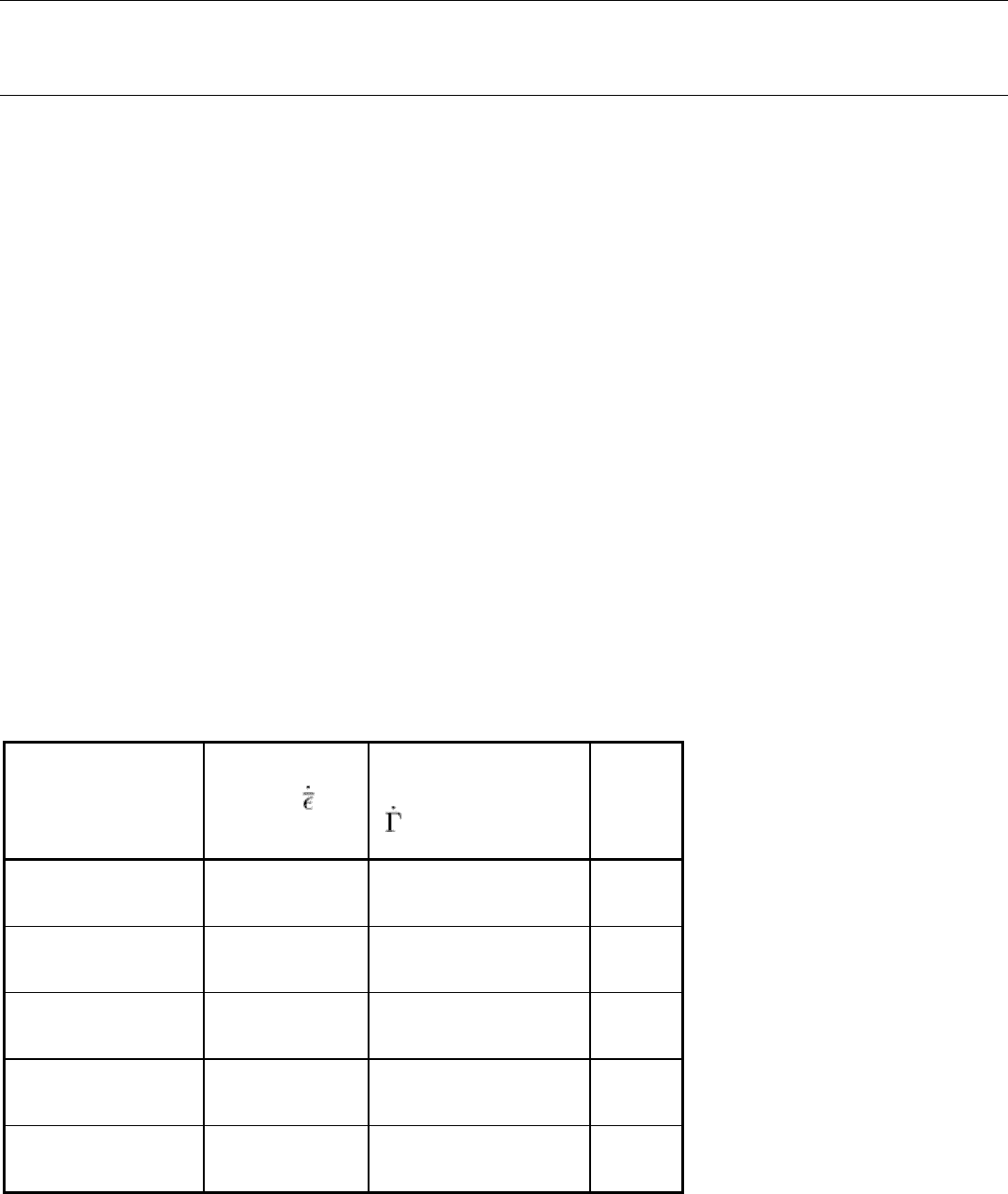
A number of workability tests will be discussed that are especially applicable to the forging process. These forgeability
tests are used because they lend themselves to the form of material or the particular forging process. Although most
workability tests seek to determine the extent of large-scale deformation that is possible before fracture, one class of test
is concerned with the propensity for localized deformation and fracture.
Finally, this article will conclude with a discussion of typical forging defects. Although not strictly related to workability
tests, forging defects certainly represent a limitation to workability.
Workability Tests
George E. Dieter, University of Maryland
Primary Tests
The primary tests for workability are those for which the stress state is well-known and controlled. Generally, these are
small-scale laboratory simulation tests.
The tension test is widely used to determine the mechanical properties of a material (Ref 1). Uniform elongation, total
elongation, and reduction in area at fracture are frequently used as indices of ductility. However, the extent of
deformation possible in a tension test is limited by the formation of a necked region in the tension specimen. This
introduces a triaxial tensile stress state and leads to fracture.
For most metals, the uniform strain that precedes necking rarely exceeds a true strain of 0.5. For hot-working
temperatures, this uniform strain is frequently less than 0.1. Although tension tests are easily performed, necking makes
control of strain rate difficult and leads to uncertainties about the value of strain at fracture because of the complex
stresses that result from necking. Therefore, the utility of the tension test is limited in workability testing. This test is
primarily used under special high strain rate, hot tension test conditions to establish the range of hot-working
temperatures. A description of this test method can be found later in this article.
In the torsion test, deformation is caused by pure shear, and large strains can be achieved without the limitations
imposed by necking (Ref 2, 3). Because the strain rate is proportional to rotational speed, high strain rates are readily
obtained (Table 1). Moreover, friction has no effect on the test, as it does in compression testing. The stress state in
torsion may represent the typical stress in metalworking processes, but deformation in the torsion test is not an accurate
simulation of metalworking processes, because of excessive material reorientation at large strains.
Table 1 Torsional rotation rates corresponding to various metalworking operations
Operation von Mises effective
strain rate ( )
(a)
, s
-1
Corresponding surface
shear strain rate in torsion
( ), s
-1
Rotation
rate
(b)
,rpm
Isothermal forging 10
-3
1.73 × 10
-3
0.02
Hydraulic press forging 1 1.73
16.5
Extrusion 20 34.6
330.4
Mechanical press forging
50 86.6
827.0
Sheet rolling 200 346.4
3307.9
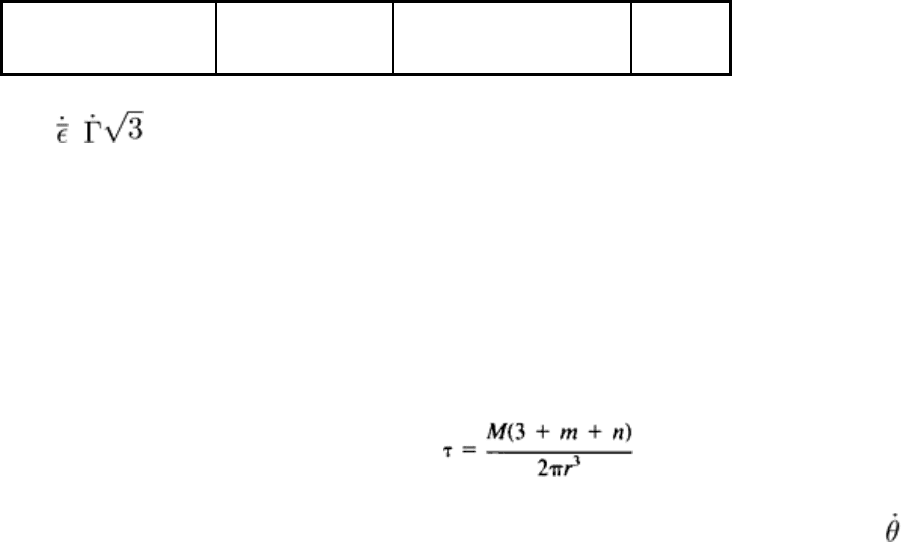
Wire drawing 500 866.0 8269.7
(a)
=
(b)
Assuming specimen geometry with r/L = 1.0
Because of the above advantages, the torsion test is frequently used to measure the flow stress and the stress-strain curve
(flow curve) under hot-working conditions. Figure 1 shows typical flow curves as a function of temperature and strain
rate. In the torsion test, measurements are made of the torque, M, to deform the specimen and the angle of twist θor
number of turns (θ = 2π rad per turn). The shear stress τ on the outer surface of the specimen is given by:
where r is the specimen radius, m is the strain rate sensitivity found from plots of log M versus log at fixed values of θ,
and n is the strain-hardening exponent obtained from the instantaneous slope of log M versus log θ.
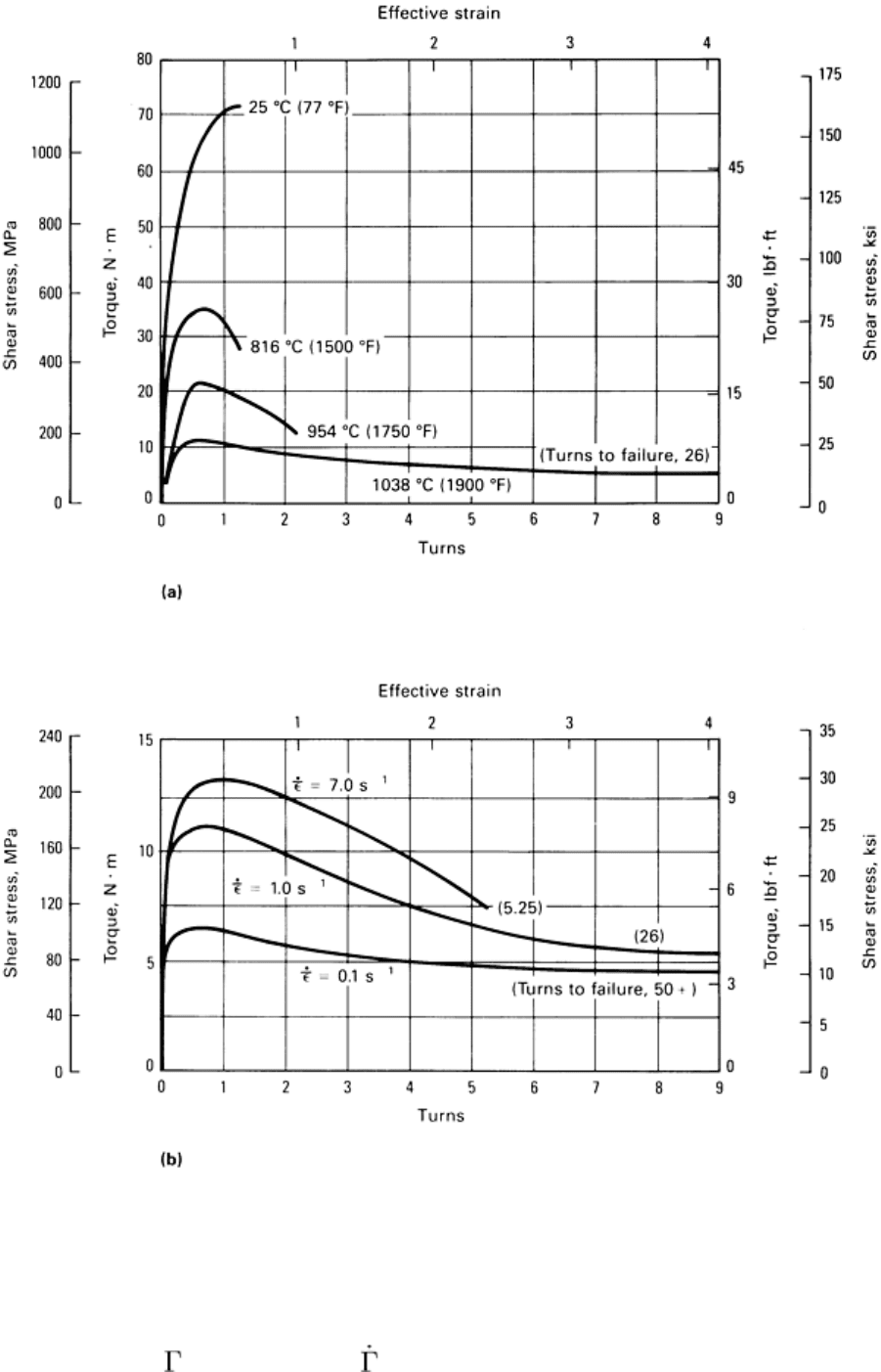
Fig. 1 Flow curves for Waspaloy. (a) Effect of temperature at a fixed effective strain rate of 1 s
-1
. (b) Effect of
strain rate at a fixed test temperature of 1038 °C (1900 °F). Flow softening at the higher temperature is a
result of dynamic recrystallization. Source: Ref 4.
The engineering shear strain and shear strain rate are given by:
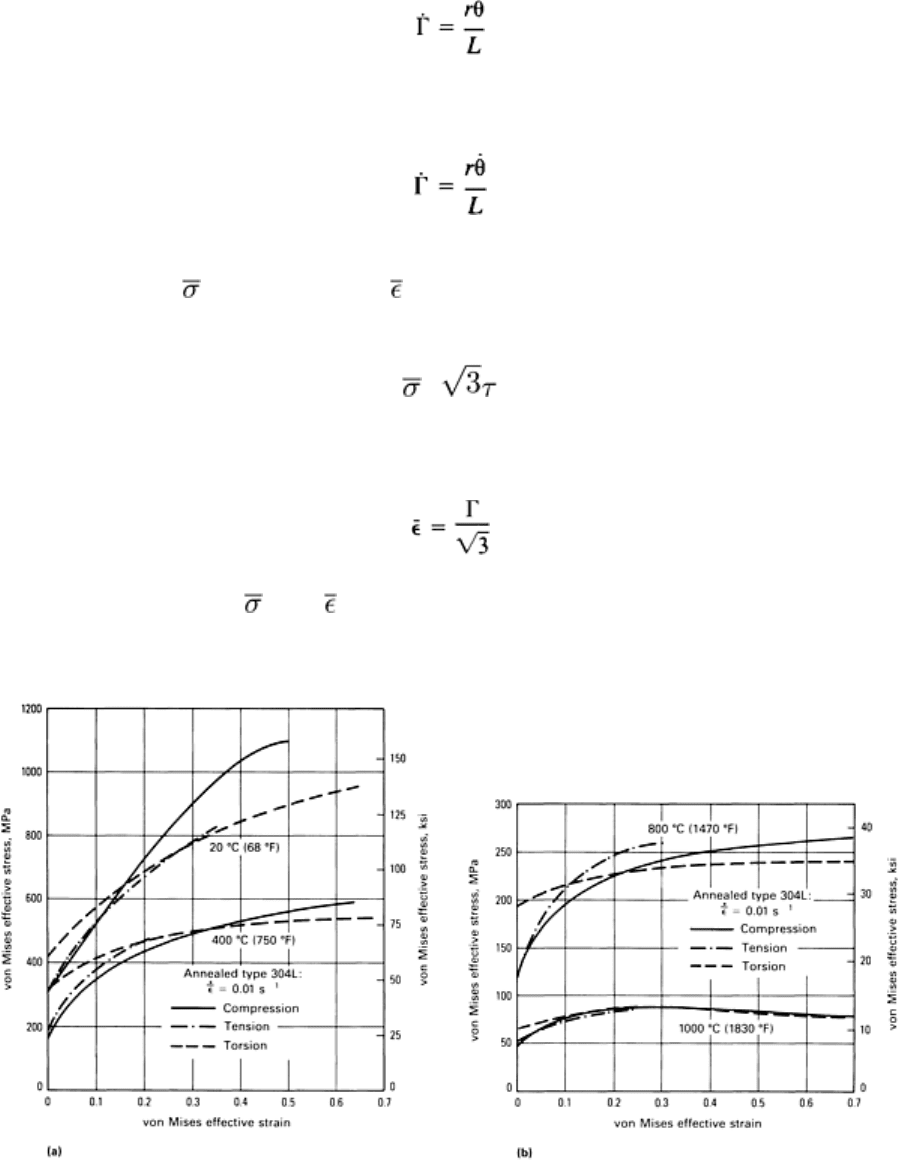
and
where r is the radius of the specimen and L is the gage length. These values of shear stress and shear strain are typically
converted to effective stress and effective strain by means of the von Mises yielding criterion (see the article
"Introduction to Workability" in this Section):
=
and
Figure 2 shows agreement in plots of versus for stress-strain data determined in torsion, tension, and compression. The
agreement becomes much better at hot-working temperatures.
Fig. 2 Comparison of effective stress-strain curves determined for ty
pe 304L stainless steel in compression,
tension, and torsion. (a) Cold- and warm-working temperatures. (b) Hot-working temperatures. Source: Ref 2.
Fracture data from torsion tests are usually reported in terms of the number of twists to failure or the surface fracture
strain to failure. Figure 3 shows the relative hot workability of a number of steels and nickel-base superalloys, as
indicated by the torsion test. The test identifies the optimal hot-working temperature.
